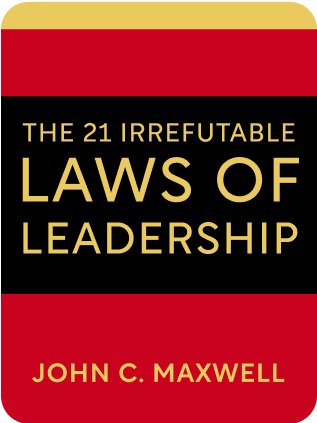

This article is an excerpt from the Shortform book guide to "The 21 Irrefutable Laws Of Leadership" by John C. Maxwell. Shortform has the world's best summaries and analyses of books you should be reading.
Like this article? Sign up for a free trial here .
What is the Law of Explosive Growth? What can you, as a leader, do to push your business to the next level and make it succeed at increasingly higher levels?
The Law of Explosive Growth is the second-to-last of The 21 Irrefutable Laws of Leadership. This law states that effective leaders look beyond themselves by developing leadership qualities in others. If you are not encouraging leadership in your subordinates, you are limiting your company’s potential for growth.
Keep reading to learn about the Law of Explosive Growth by John C. Maxwell.
The Law of Explosive Growth
Since leadership is the cap on success (Law #1), developing other leaders is the only way for an organization to truly excel. If you develop only yourself, you’ll personally succeed. If you develop a team, your organization will improve. But if you develop leaders, your organization will experience exponential growth.
There’s always a tension between where the leader wants their people and organization to be, and where they actually are. Leaders are impatiently up at the front, and everyone else lags. Applying the Law of Explosive Growth can help eliminate that lag.
Developing leaders is very different from attracting followers. Compare the following attitudes, values, and actions, one of which attracts followers, one of which attracts leaders.
- Needed vs. succeeded.
- Leaders who attract followers (LWAF) are searching for people who need their direct influence.
- Leaders who attract leaders (LWAL) are trying to find people who can take over for them.
- Developing the bottom vs. developing the top.
- LWAF let their weakest followers (bottom 20%) take up most of their time.
- LWAL focus on their strongest followers (top 20%), because they know that once the top people are developed, they’ll help everybody else.
- Weakness vs. strengths.
- LWAF, because they’re working with the bottom 20%, spent most of their time dealing with weaknesses.
- Since LWAL are working with their top people, they’re focusing on developing strengths.
- Treat everyone the same vs. treat everyone differently.
- LWAF treat everyone equally. If you treat weak and strong people the same, your organization is going to end up with a lot of weak people.
- LWAL reward people based on results. If a person does well at leadership, they’ll receive more opportunities.
- Spending time vs. investing time.
- LWAF don’t develop their followers. Their followers don’t improve.
- LWAL help their people become better leaders, which increases their value to the organization.
- Addition (direct) vs. multiplication (indirect).
- LWAF only impact people directly. When a leader gains a follower, they gain a single person.
- LWAL impact their people, and since their people are leaders and have their own followers, the top leader is therefore impacting a whole chain of followers.
There are three main challenges to applying the Law of Explosive Growth:
- It’s hard to find leaders. There aren’t that many people in the world who are capable of applying the laws of leadership.
- It’s hard to amass leaders. Leaders often want to do their own thing. Your vision has to be more compelling and interesting than theirs if you want to bring them over. You also need to have an organization that will interest them. Most organizations want stability, structure, and rules. Leaders want the opposite.
- It’s hard to keep leaders. You can only lead leaders if your leadership abilities are stronger than theirs (remember Law #7, leaders follow the strongest leader). As your leaders grow, you must also grow to keep ahead of them. Also remember that only leaders can develop other leaders. If you help others develop, they will stay with you.
Example of Successful Application of the Law: EQUIP
In 2001, EQUIP, an organization that developed leaders, came up with a lofty goal—develop one million leaders by 2008. Relying on this law, EQUIP would directly train only 40,000 leaders, but would ask each of these 40,000 leaders to then train an additional 25 leaders.
EQUIP started the program in cities in India, Indonesia, and the Philippines. When the leaders finished training and were asked to commit to training their own 25 leaders, 90% of them agreed. EQUIP continued the program in other areas, following the five steps:
- Connect with leaders in those areas who were already training leaders
- Ask those leaders to choose appropriate cities for training
- Ask those leaders to recruit participants
- Find American leaders who were willing to travel and train leaders
- Ask the leaders coming out of the program to train other leaders
Not every leader trained 25 new leaders—some could only commit to training five or ten, but others were training up to 250. EQUIP reached its one-million-leader goal by 2006, two years early.
Exercise: Applying the Law of Explosive Growth
When leaders join your team, they bring along all their followers, which multiplies your reach.
Are you primarily leading followers or other leaders? How do you know? Remember that followers need your direct attention and tend to be weaker, while leaders have the potential to take over for you.
Think of specific ways you might find leaders. For example, you might find them by attending events or networking, or by developing leadership potential in people who already work with you.
Consider how to recruit and keep the leaders you’ve brainstormed above. You might develop your own leadership skills, or create an exciting environment.

———End of Preview———
Like what you just read? Read the rest of the world's best book summary and analysis of John C. Maxwell's "The 21 Irrefutable Laws Of Leadership" at Shortform .
Here's what you'll find in our full The 21 Irrefutable Laws Of Leadership summary :
- Why working with people is the only way to do meaningful work
- How to become the kind of person that can get things done
- Why you don't need to be good at all the laws of leadership to be a good leader






